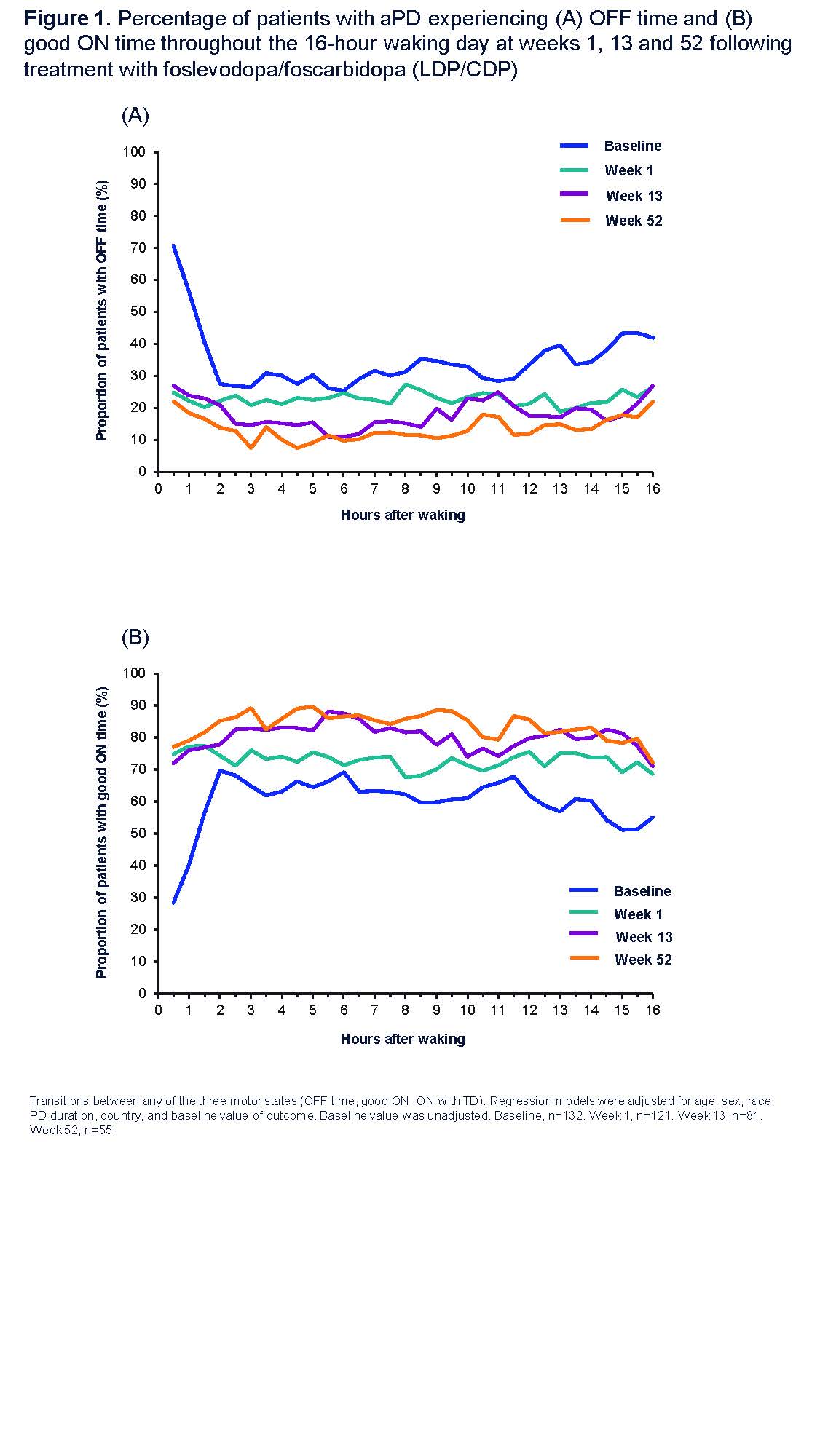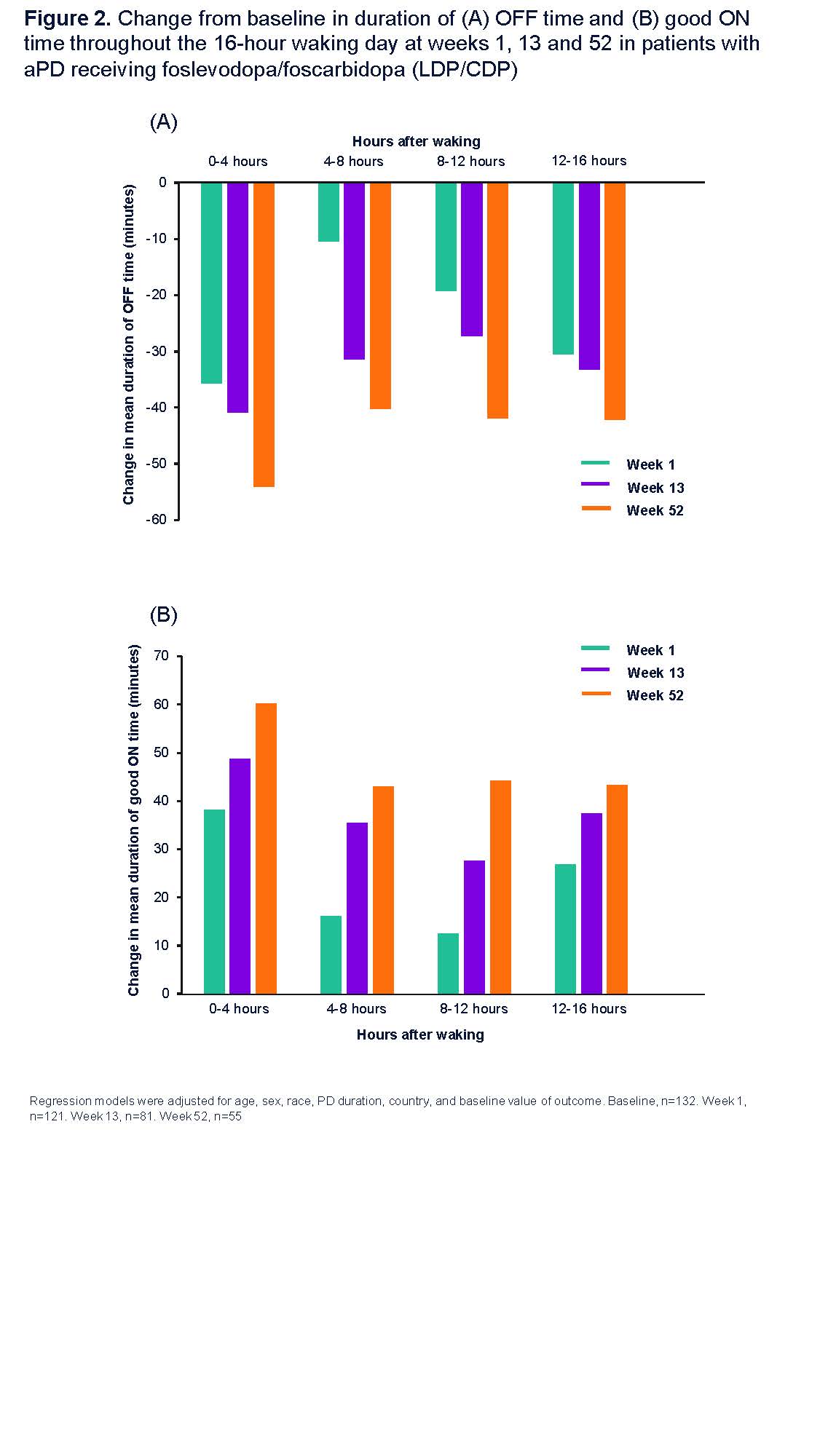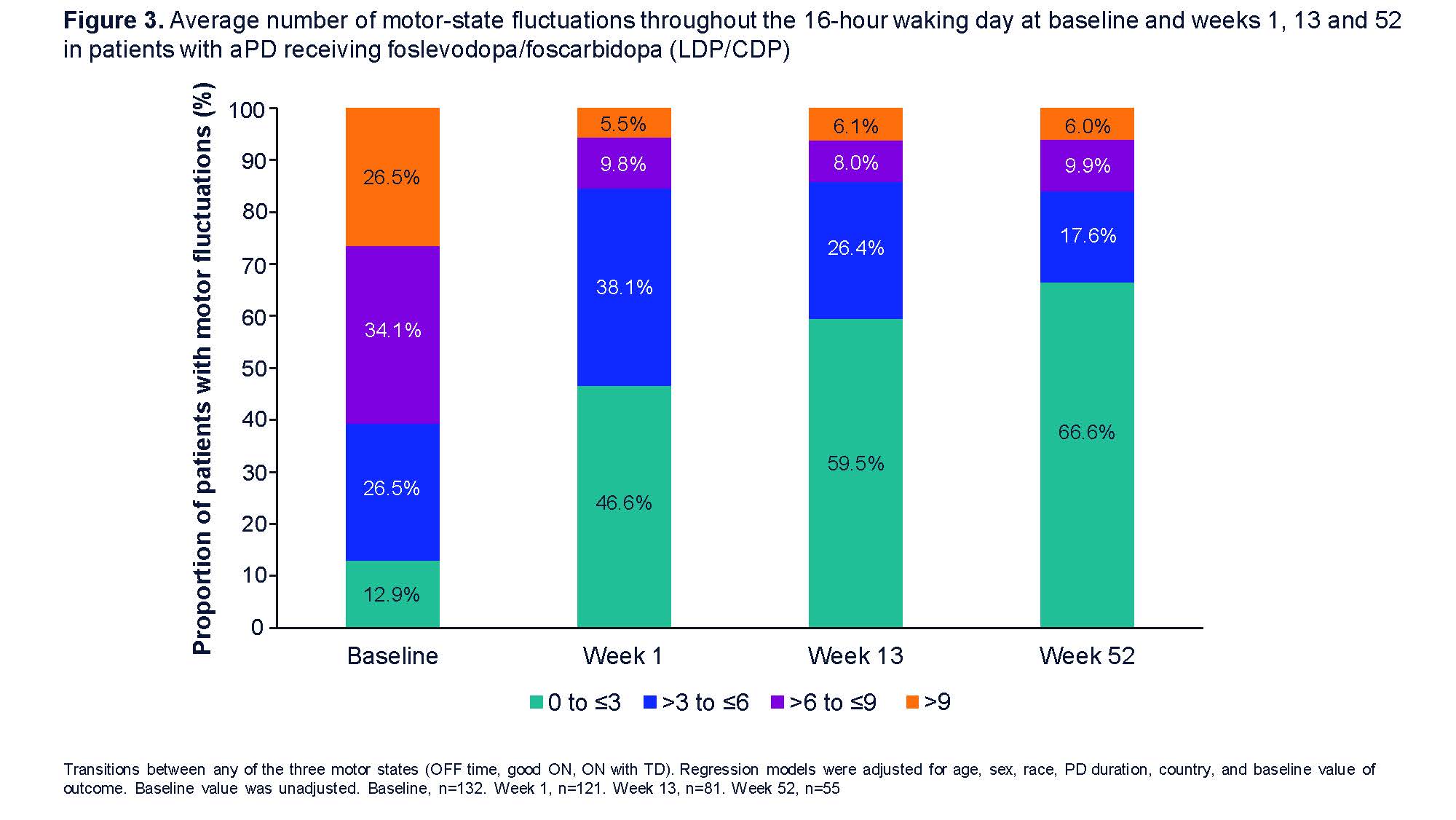Category: Parkinson’s Disease: Clinical Trials
Objective: To evaluate temporal changes in motor states (OFF and ON without troublesome dyskinesia [TD; good ON]) throughout the waking day in patients with aPD treated with LDP/CDP over 52 wk.
Background: LDP/CDP, a soluble prodrug formulation of levodopa/carbidopa delivered as a 24h/day continuous subcutaneous infusion, enables stable plasma levodopa concentrations throughout the day. The longer-term impact of this on motor-state stability throughout the day is not established.
Method: In this post hoc analysis of data from a 52 wk, single-arm, open-label trial of LDP/CDP (NCT03781167), OFF and good ON time were evaluated from patient diaries completed throughout the 24h day (normalized to 16h waking days) in the 3 days before each assessment (baseline, 1, 6, 13, 26, 39, 52 wk). Adjusted regression models evaluated time to good ON after waking, motor-states throughout the day at 30min and 4h intervals, and motor fluctuations/day (transitions between OFF time, good ON, ON with TD).
Results: Baseline and up to 52 wk diary data were available for 132 patients (mean [SD] age, 63.1 [9.1] y; mean [SD] duration of PD, 10.1 [4.9] y; 85.6% white). Mean time to good ON after waking decreased from 71.7min (baseline) to 45.7min (1 wk) and 27.6min (52 wk). Nearly 3-times more patients reported good ON within 30 min after waking at 1 wk after initiating LDP/CDP (74.8%) than at baseline (28.5%), and this was sustained up to 52 wk [figure 1]. The greatest improvements from baseline in duration of OFF and good ON time occurred during the first 4h of the waking day, as early as 1 wk and improved up to 52 wk [figure 2]. During LDP/CDP, <30% of patients reported OFF time and >60% of patients reported good ON time overall across each 30min interval of the waking day [figure 1]. On average patients experienced fewer fluctuations at 52 wk (3.1) than at baseline (7.4). The proportion of patients reporting ≤3 fluctuations/day increased from 12.9% at baseline to 66.6% at 52 wk [figure 3].
Conclusion: Patients on LDP/CDP were more likely to wake up in good ON and experienced fewer motor fluctuations within 1 wk, with improvements up to 52 wk. Stability of motor symptoms permits patients greater predictability of motor responses, which may improve quality of life throughout the morning, day and night.
To cite this abstract in AMA style:
R. Pahwa, I. Malaty, M. Soileau, V. Fung, D. Santos Garcia, C. Carroll, T. Henriksen, A. Epstein, C. Yan, A. Alobaidi, A. Shewale, A. Spiegel, M. Facheris, M. Shah, P. Kukreja, J. Zamudio, K. Chaudhuri. Stability and predictability of motor symptom control in patients with advanced Parkinson’s disease (aPD) receiving continuous subcutaneous foslevodopa/foscarbidopa (LDP/CDP) [abstract]. Mov Disord. 2023; 38 (suppl 1). https://www.mdsabstracts.org/abstract/stability-and-predictability-of-motor-symptom-control-in-patients-with-advanced-parkinsons-disease-apd-receiving-continuous-subcutaneous-foslevodopa-foscarbidopa-ldp-cdp/. Accessed December 20, 2025.« Back to 2023 International Congress
MDS Abstracts - https://www.mdsabstracts.org/abstract/stability-and-predictability-of-motor-symptom-control-in-patients-with-advanced-parkinsons-disease-apd-receiving-continuous-subcutaneous-foslevodopa-foscarbidopa-ldp-cdp/



